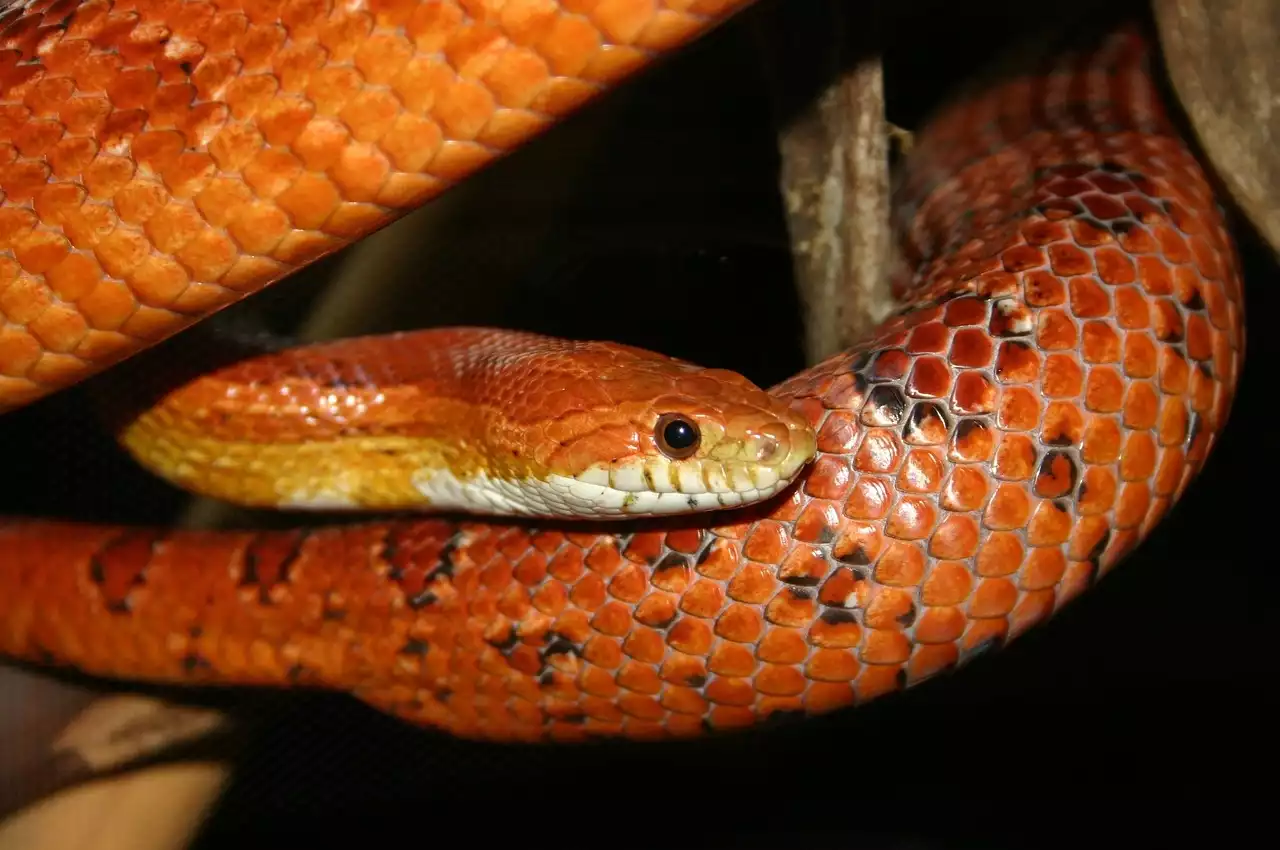The Corn Snake is one of the most popular pet snakes because of their docile nature and low maintenance needs. Their large size, vibrant colors, and tendency to feed on mice instead of other snakes make them an attractive option for pet owners. For anyone thinking about adopting a Corn Snake as their next pet, here's what you need to know before making that decision.
What is a Corn Snake?
Corn snakes are non-venomous constrictor snakes native to the eastern United States. They can be found in the wild in a variety of colors and patterns, with names like “carpet” or “piebald.” “Blood Rubin” is the most common color of Corn Snake in the pet trade. Some Corn Snakes have bands that are lighter or darker than the rest of the body, and these are sometimes called “blue-eyed” or “albino.”
Despite their large size and vivid coloring, these snakes rarely bite humans. In fact, their name comes from the fact that they are less likely to bite than other types of snakes. They are native to the eastern U.S., where they can be found in a variety of habitats, including forests, swamps, woodlands, and other wooded areas. Corn Snakes are occasionally mistaken for a venomous snake called a copperhead, whose markings are very similar. Fortunately, Corn Snakes can be easily identified by their large, round heads, long bodies, and bright red coloring.
Corn Snake Facts: Super Smart, Terrifying, and INCREDIBLY fascinating!
How Big Do They Get?
Corn snakes can grow up to 6 feet long. Their average lifespan is about 10 to 15 years but can be as long as 30 years if well cared for. A Corn Snake’s size at the time of adoption will vary depending on the individual. Females are usually larger than males, and snakes that are older or more highly bred will also be larger. If a young Corn Snake is properly cared for, it will continue to grow until it reaches its full adult size. Younger Corn Snakes are generally smaller than adults, but their size will vary depending on the individual snake. The average Corn Snake size at one year is 12 to 15 inches long.
Care Requirements
Corn snakes are very easy to care for, making them a great first reptile pet. They require a tank with a secure lid, bedding, and a water bowl. The tank size will depend on the size of the snake at the time of adoption, but most Corn Snakes are happy living in a 10-gallon aquarium. Corn snakes are excellent escape artists, so the tank should have a tight-fitting lid. This can be achieved by using an aquarium sealant. Corn snakes need to be kept at an ideal temperature of 75° to 80° F. This is generally achieved using an aquarium heater. Corn snakes are very clean animals, so a weekly tank cleaning is usually enough. Corn snakes are usually fed once every two weeks, so a large enough habitat is needed to store their meal between feedings. Corn snakes should be fed either mice or rats, two or three times a month.
Food and Nutrition
Corn snakes are non-venomous, so they cannot cause a reaction in people with allergies to reptiles. They are also easy to handle, meaning they can be a good choice for families with young children. However, children should be supervised while handling any animal, including a Corn Snake, to reduce the risk of injury. Corn snakes are carnivores. They are often fed mice, which are available in pet stores or ordered online. Other options for feeding include rodents and insects. Corn snakes can be fed either once every two weeks or every week, depending on the individual and how quickly they eat. There are also special commercial foods designed for Corn Snake diets and nutritional needs. Corn snakes can be fed as babies or adults. Babies require smaller foods and are often fed smaller rodents such as mice or young rats. Adults can be fed larger rodents like rats.
Habitat
Corn snakes are not picky when it comes to habitat, but they do need a humidity of around 60% to stay healthy and thrive. Humidity can be added by spraying the tank with warm water every other day or by creating a moist habitat. A Corn Snake habitat should have a secure lid to prevent escape. A dirt or sand substrate is recommended for Corn Snakes, and it should be replaced every two to three months to prevent the build-up of bacteria. Since Corn Snakes are susceptible to respiratory infections, it is important to keep their habitat clean and bacteria-free. Wiping the habitat surface once a month with a 10% bleach solution will prevent the growth of bacteria. Corn snakes prefer a warm environment, so a basking spot of 95° F and a cooler spot of 80° F should be provided. A heat lamp is recommended for providing this heat.
Potential Problems
Corn snakes are susceptible to respiratory infections and parasites. To prevent these infections, keep the habitat clean and wash your hands before handling the snake. Corn snakes are also susceptible to metabolic bone disease, which can be prevented with a calcium and vitamin D3 supplement. Corn snakes are also known to be difficult to breed in captivity, so most are purchased at a young age.


 At Home Anti-Aging Remedies for the Face
At Home Anti-Aging Remedies for the Face
 Broadway and its Many Theatres
Broadway and its Many Theatres
 Who are the Most Famous French Chefs?
Who are the Most Famous French Chefs? Why The Milk Snake Might be a Perfect Pet
Why The Milk Snake Might be a Perfect Pet How to Look After a Ball Python
How to Look After a Ball Python All You Need to Know about Keeping a Tortoise
All You Need to Know about Keeping a Tortoise All You Need to Know About Caring for Terrapins
All You Need to Know About Caring for Terrapins